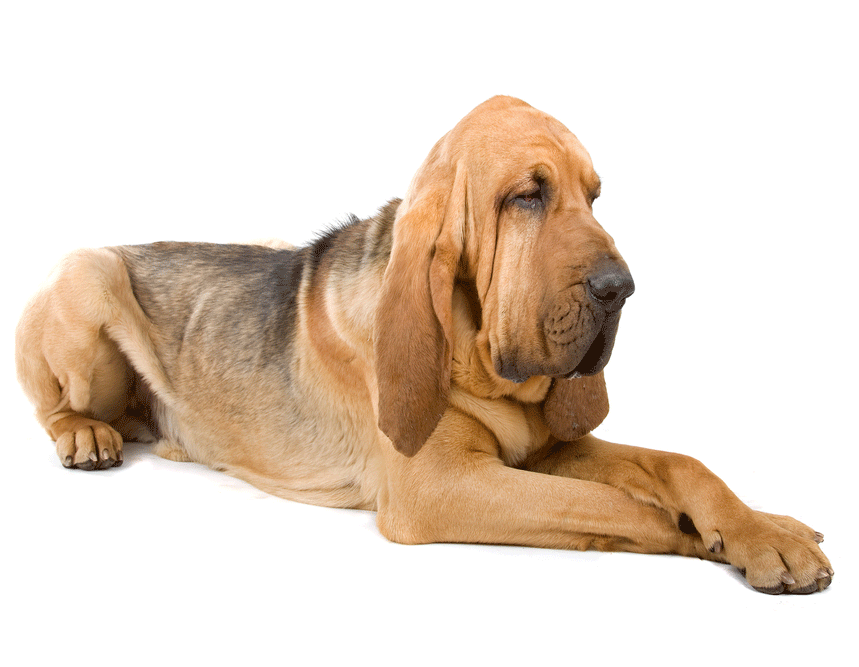Bloodhound Info & Bloodhound Breeders
Skip to Registered Bloodhound Breeder list >
The Bloodhound is a large scent hound originally bred for hunting deer and wild boar, but also used from the Middle Ages onwards for tracking human beings, and now most often bred specifically for that purpose. Thought to be descended from hounds once kept at the Abbey of St Hubert in Belgium, it is known to French speakers as the Chien de Saint-Hubert.
This dog is famed for its ability to discern human odors even days later, over great distances, even across water. Its extraordinarily keen sense of smell is combined with a strong and tenacious tracking instinct, producing the ideal scent hound, and it is used by police and law enforcement all over the world to track escaped prisoners, missing people, lost children and lost pets.
This breed is gentle, yet tireless when following a scent. Because of its strong tracking instinct, it can be willful and somewhat difficult to obedience train. Bloodhounds have an affectionate and even-tempered nature, making excellent family pets. However, like any pet, they require supervision when around small children.
It is generally agreed that the basis of initial training is to make the experience enjoyable for the puppy or young hound, to keep its enthusiasm high. Whitney preferred waiting till the hound is 18 months old, to start training, but others start as young as possible, say three months. Training can be started by running short trails on a family member whom the puppy sees walk away, at first remaining visible, and later going out of sight. Even though familiar with the scent of the ‘runner’, it can be given a scent-article to sniff, and given the command to follow. It can also be introduced to the tracking harness, which is put on just before the trail starts, and removed as soon as it is finished. On reaching the runner the puppy is given lavish praise and perhaps a reward. Generally in training the handler must know exactly where the runner went, so that he does not encourage the hound when it is wrong, or ‘correct’ it when it is on the scent, but he should not be too ready with his corrections if the hound goes astray, or it may come to rely on him. He should give the hound time to realise its mistake and put itself right, if possible. As training progresses the handler learns to ‘read’ his hound’s behaviour. The hound must trust its nose and the handler must trust the hound. From early hot trails on a familiar person, the young hound progresses to colder trails on the scents of strangers. Later training can be designed to teach particular lessons: crossing trails with false scents, having the runner start out with a companion, who leaves him somewhere along the trail, laying a trail on ground frequented by wild animals. This will teach the hound not to change on to other humans, or riot on animal scents (known as ‘staying clean’ [US], or ‘freedom from change’ [UK]). It also needs to work over a variety of ground and learn to cope with distractions of many kinds, as well as being introduced to 'negative trails': given a scent article which has not been handled by anyone in the area, so that it will learn to indicate to a handler that the required scent is not there. If it is becoming discouraged it can revert to simpler tasks to recover enthusiasm.
Source: Wikipedia
If you are a small scale ANKC registered breeder and would like to be listed here, just contact us or follow a few simple steps to add your details yourself.
We welcome helpful comments and contributions to information about this breed by email


.jpg)
.jpg)
.jpg)